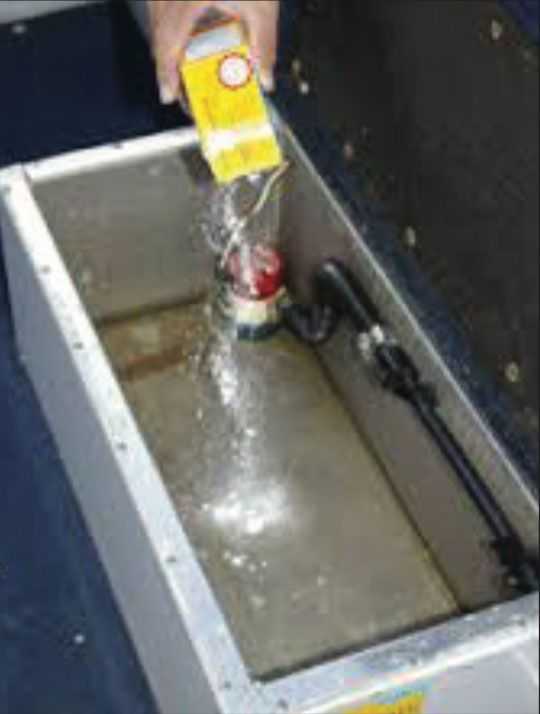Have you ever gone fishing on a boat whose owner doesn’t clean his livewells? It’s not a pretty sight or smell and it can ruin an otherwise enjoyable trip. Livewells are a collector of fish scales, slime, feces, regurgitated stomach contents, vegetation, and bacteria which given a chance to grow in south Florida’s heat, will quickly turn into a stinky moldy mess with the potential to kill its next inhabitant. A few simple steps can prevent a livewell from going rogue.
The simplest way to keep your livewells clean is to flush them out with fresh city water after each trip.
Just stick your garden hose into the tank, fill it up, purge out any biological debris, recirculate the water for a few minutes, drain it out and then leave your well open so that it dries thoroughly. This should only take you a few minutes and the low concentrations of chlorine in the city water will kill-off most of the bacteria and fungus in the tank and hoses. Just make sure when you store your boat the livewells are dry and covered so that rain, leaves, and wind- blown debris can’t get into your nice clean well.
If you find you need to be a little more aggressive in your cleaning then it’s imperative to clean your livewell with substances that are non-toxic to fish. Start by removing the filter screens on both the livewell and the water intake. Pressure clean these filters with a blast of clean water to free up any clogs or deposits. Once this is done move on to scrubbing the interior of the well with a stiff scrub brush and/or sponge. Here you have a choice of using commercial cleaners specifically made for cleaning livewells or you can also use non-toxic cleaners that you have lying around the house such as baking soda, hydrogen peroxide, Oxiclean, and mild dish detergents. Stronger chemicals such as Fantastic or chlorine bleach can be used though only in very light concentrations. No matter which solution you choose, thoroughly flush out the tank, the pump and all hoses. Upon your final rinse, if any bubbles form in the tank, that is a good indicator that there is still chemical residue in the tank so flush the tank again. Once thoroughly cleaned, allow the unit to dry completely before stowing it away.
The last step in preparing you clean livewell to begin accepting your catch is to flush out the tank one last time using fresh clean lake water the morning you go fishing. You can never be too safe when it comes to providing a safe environment for that trophy 10-lb bass.
Finally, while you’re spending the time to scrub out your livewell, check out the electrical connections. Electrical components in a boat take a bounding while on the water so since you are already there, follow the wires to their terminal points and make sure they are snug tight on the terminal block. If the wires pass into enclosed spaces below deck or into the gunnels, check these areas for excessive wear and tear.
Though boat maintenance can sometimes be a pain, proper wash down procedures can minimize the frequency of the more labor intensive tasks and make your time on the water much more enjoyable.







